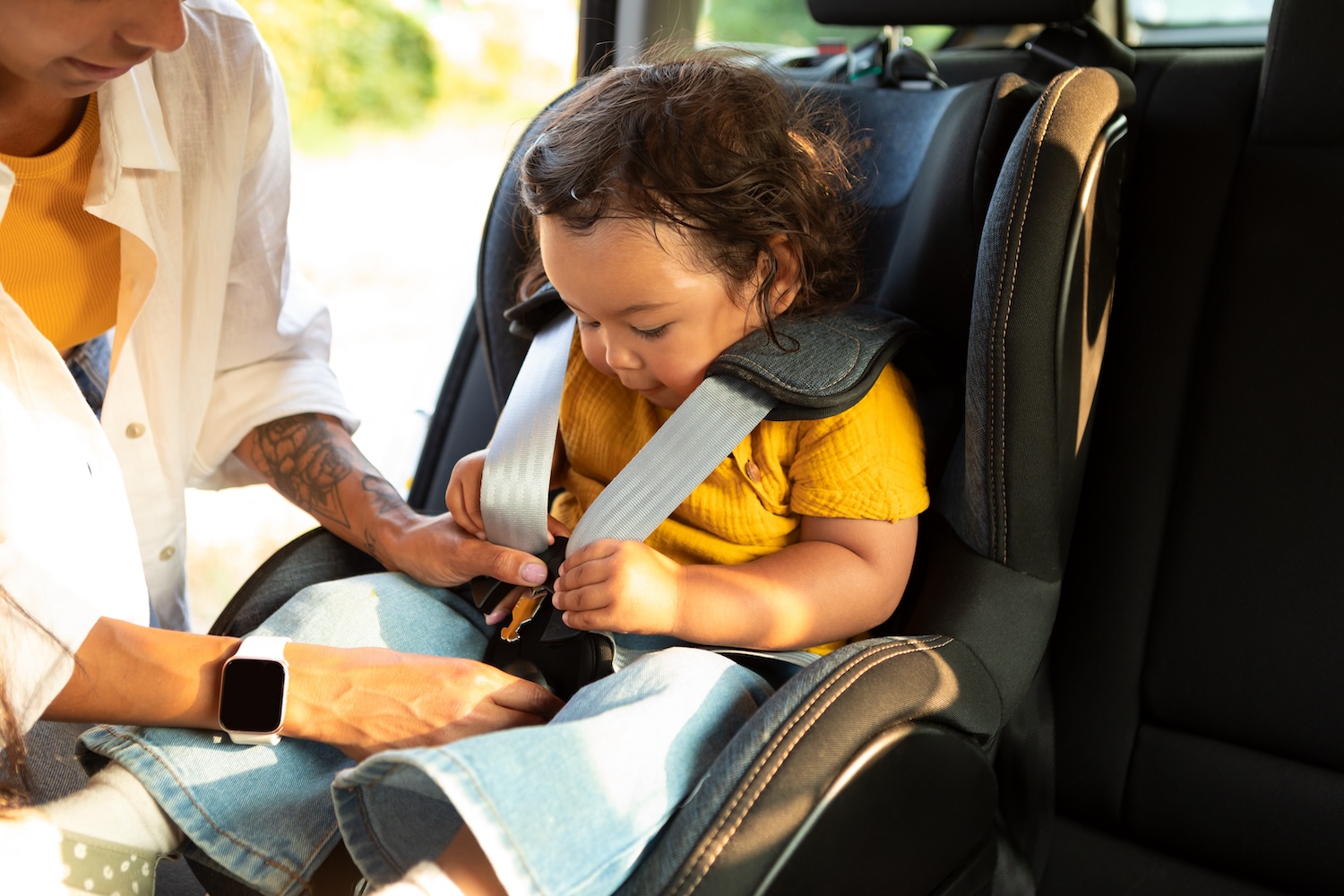Car seats, booster seats and seatbelts
Recommendations for car seats and booster seats, as well as information on Washington seatbelt laws.
Short URL: kingcounty.gov/carseats

Need help with your car seat?
Free child car seat check events (382 KB) are happening locally throughout 2026 for parents, parents-to-be and caregivers.
Whether this is your first time installing a car seat in preparation for the arrival of a new baby or you’ve done this many times, installing car seats correctly can be tricky.
Only one in four car seats are installed correctly according to national data. That’s in part because every car seat and vehicle is different and as your child grows, how they travel in your car will change.
Car seat and booster seat recommendations
Learn how to stay safe on the road. Follow these recommendations to ensure the safety of your child’s car seat.
- Keep your child in their current car seat for as long as possible to maximize safety. That means following the car seat manufacturer's height and weight requirements.
- All infants should ride in rear-facing car seats starting with their very first ride. Rear-facing is the safest seat position for children. Many rear-facing car seats can support a child up to 40 or 50 pounds. Infants and toddlers should ride rear-facing as long as possible, until they reach the highest weight or height allowed.
- When your child has outgrown their rear-facing car seat, they should use a forward-facing car seat with a harness for as long as possible. This would be until they reach the harness height limits, or the highest weight or height allowed.
- Booster seats are for older children who have outgrown the forward-facing car seat. Check your car seat's height, weight, or shoulder height limits. Children should use a booster seat until the vehicle's seat belt fits them correctly. Booster seats must use a lap AND shoulder belt. If your child can climb out of the booster seat or will not sit upright for an entire trip, it is not safe. Find a car seat with harness that will fit your child’s height and weight.
- Children are large enough to use the vehicle seat belt when they reach 4'9" tall, usually between 8 and 12 years of age. Most children will not use seat belts without a booster seat until 10 or 11 years of age. Children should always use lap and shoulder seat belts for optimal protection. Children younger than 13 should always ride in the back seat. Check out the Safe Kids Seat Belt Fit Test to know if your child is ready.
Seat belt laws: Click It or Ticket!
Washington state laws require that everyone in a motor vehicle wear a fastened seat belt. The fine for not wearing a seatbelt or appropriate child restraint costs $124.
Washington's Seat Belt Law (RCW 46.61.688) states that:
- Every person 16 years or older operating or riding in a motor vehicle must wear a safety belt that is securely fastened.
- No person may operate a motor vehicle unless all child passengers under the age 16 are either wearing a safety belt or are securely fastened in an approved car seat.
Washington's Child Passenger Restraint Law (RCW 46.61.687) states that:
- Children up to age 2 must be properly secured in a rear-facing car seat.
- Children ages 2-4 years must ride in a car seat with a harness (rear or forward facing).
- Children 4 and older must ride in a car or booster seat until they are 4' 9" tall.
- Children over height 4' 9" must be secured by a properly fitted seat belt (usually starting at 8-12 years old).
- Children up to age 13 must ride in the back seat when practical to do so
For the best protection, a child should remain in each stage of restraint until they reach the maximum height and weight based on the manufacturer’s instructions.

 Translate
Translate